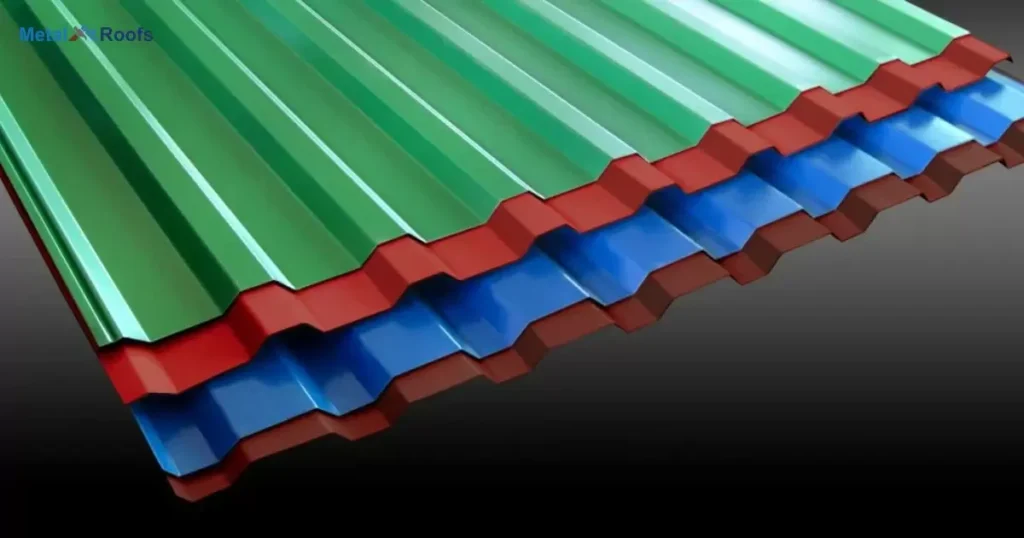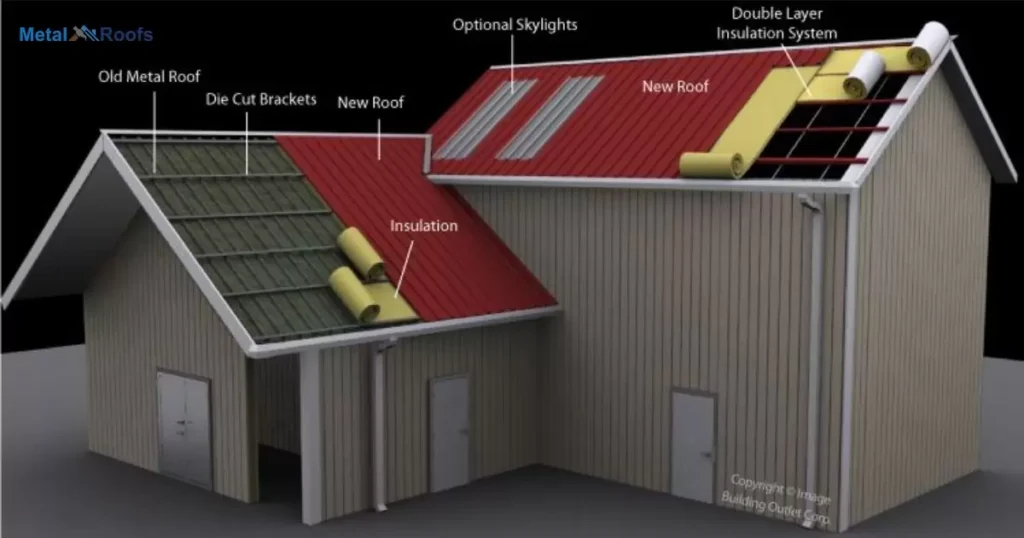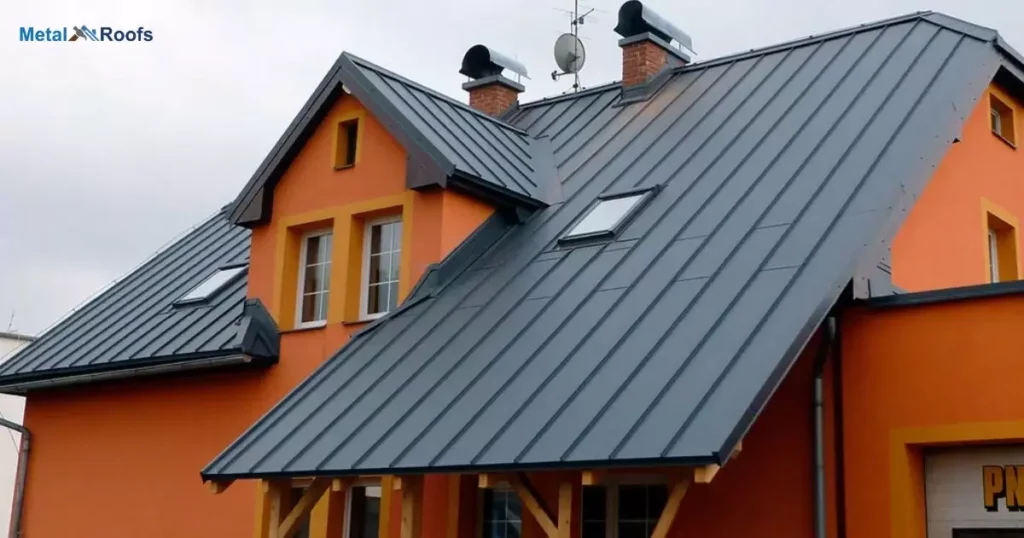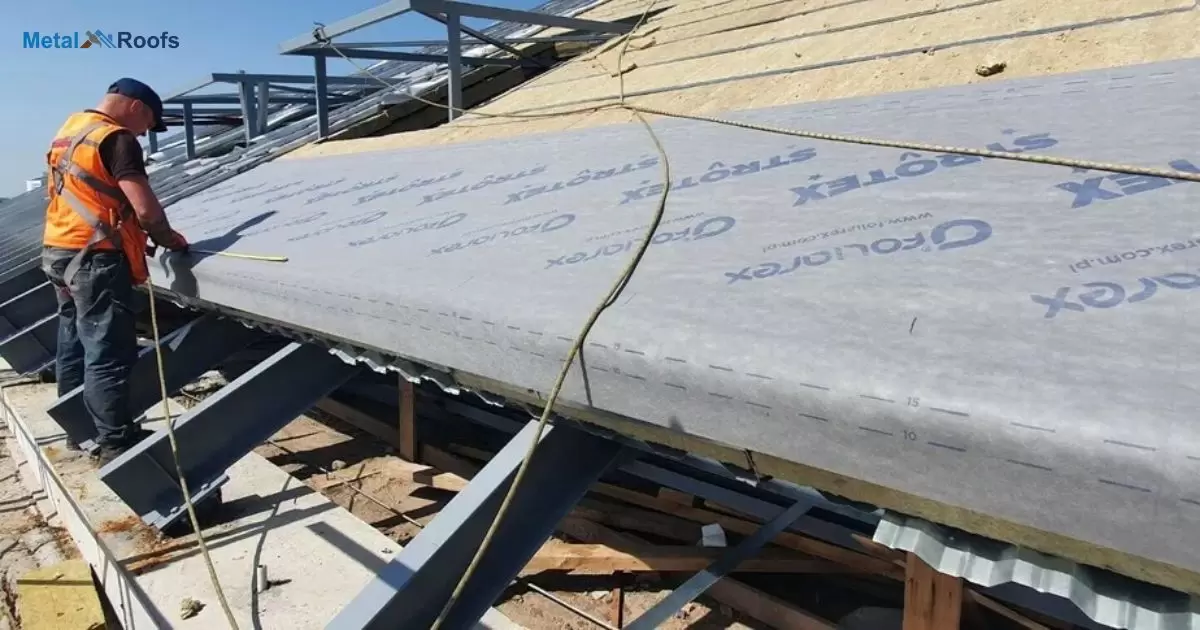Metal roof is thin gauge steel roof. Walk with care on thin metal roof. Roof can dent or fail from impact. Use special safety shoes and boards. Go slow and test each roof panel. Never walk on end lap of panels. Keep your weight evenly distributed. Hire pros for major roof projects.
Metal roofs are lightweight steel. Some are thin 29-gauge panels. Can you walk on 29-gauge metal roof? Yes, but you must take precautions. Roofs can dent from too much weight. Use safety gear and walk boards. Hire professionals for major jobs.
Walking on a thin metal roof like a mansard vs gambrel is risky as they aren’t designed for foot traffic. Panels can bend or come loose, causing serious damage. Use walk boards, wear non-slip shoes, and move slowly to stay safe.
Key Takeaways
- Walking on a 29-gauge metal roof is possible but risky.
- Distribute weight evenly to avoid damaging the roof.
- Wear soft-soled footwear to prevent scratching.
- Use caution and consider consulting a professional.
Impact On Durability And Weather Resistance
Walking on a 29-gauge metal roof might affect its durability. The metal can dent or puncture easily under excessive weight. Even though it’s possible, it’s not recommended unless it’s absolutely necessary. The weather resistance of the roof could be compromised.
Damage from walking on it might weaken its ability to withstand harsh weather conditions. To maintain the roof’s durability and weather resistance, it’s important to distribute weight evenly and consider consulting a professional for any necessary maintenance or repairs.
Comparison To Other Gauges And Materials
| Aspect | Huggie Earrings |
| Gauge | Generally ranges from 20 to 18 gauge. |
| Material | Commonly made of gold, silver, or stainless steel. |
| Size | Small hoops that hug the earlobe closely. |
| Style Options | Various designs including plain, gemstone-studded, or textured. |
| Comfort | Designed for comfortable, everyday wear. |
Comparing to other gauges and materials, 29-gauge metal roofs are thinner and less sturdy. Thicker gauges like 26 or 24 offer more durability. Thicker gauges also withstand harsh weather better. Thicker gauges cost more upfront.
When compared to materials like asphalt shingles, metal roofs have a longer lifespan. They also require less maintenance. Yet, metal roofs are typically more expensive to install. Overall, the choice depends on factors like budget and climate.
29-Gauge Thickness

Sure! The 29-gauge thickness refers to the standard thickness of metal roofing commonly used in residential and commercial buildings. Despite being thin, it’s durable and widely utilized. Walking on this type of roof can pose risks as it may dent or puncture easily under concentrated pressure.
To mitigate this risk, it’s important to distribute your weight evenly while walking on the roof. Wearing soft-soled shoes helps prevent scratching the surface. Being cautious and seeking advice from professionals can further ensure safety when dealing with 29-gauge metal roofs.
26 Vs 29-Gauge Metal Roofing
When comparing 26-gauge and 29-gauge metal roofing, thickness matters. 26-gauge is thicker and stronger, offering better durability and resistance against dents and damage. It’s a solid choice for areas prone to severe weather or heavy foot traffic.
On the other hand, 29-gauge is thinner and more lightweight, making it less expensive but also more susceptible to denting and bending. It might be suitable for milder climates or structures where weight is a concern, especially when considering roof sheet metal. The decision depends on your specific needs, budget, and climate conditions.
How Much Does It Weigh?
When it comes to weight, a 29-gauge metal roof is relatively light. The gauge refers to its thickness, indicating it’s not overly hefty. Walking on it is possible, but it requires care to avoid damage. Wear appropriate footwear, distribute your weight, and be cautious.
Weight Of 29-Gauge Roof
How much does a 29-gauge roof weigh? It’s relatively lightweight, easing installation and reducing stress on structures. This gauge is thinner than others, making it manageable for most buildings. Overall, its lighter weight is a benefit for construction and structural integrity.
Comparison To 26-Gauge
Compared to 26-gauge, 29-gauge metal roofing is lighter. This difference in weight can make installation easier. 26-gauge offers slightly more durability and resistance to denting. Consider your priorities and the specific needs of your project when choosing between the two gauges.
Impact On Structural Integrity
The weight of a metal roof impacts structural integrity. While lighter than many other roofing materials, it still adds load. Proper support is crucial to prevent strain on the structure. Planning and reinforcement ensure the metal roof enhances, rather than compromises, the building’s integrity.
Step-By-Step Instructions For Safe Walking

First, check the weather. Make sure the roof is dry. Wear soft-soled shoes. Step onto the roof carefully. Distribute your weight evenly. Avoid stepping on seams or edges. Move slowly and deliberately. If unsure, consult a professional.
Second, maintain balance. Keep your center of gravity low. Use a roof ladder or harness if available. Watch for debris or loose materials. Be mindful of potential hazards. Prioritize safety over speed. When finished, exit the roof cautiously.
Tips For Extending Roof Lifespan And Performance
Extending the lifespan and performance of your roof is crucial for maintaining the integrity of your home and avoiding costly repairs. Here are some tips to help you achieve that:
Regular Inspections: Schedule regular inspections at least once or twice a year, especially after severe weather events. Look for signs of damage such as cracked or missing shingles, sagging areas, or leaks.
Keep Gutters Clean: Clogged gutters can lead to water backup, which can damage your roof and the structure of your home. Clean gutters regularly to ensure proper drainage.
Trim Overhanging Branches: Overhanging branches can scrape against your roof and provide access for pests. Trim branches back to prevent damage and minimize the risk of debris falling onto your roof.
Prevent Ice Dams: In cold climates, ice dams can form on the edge of your roof, leading to water backup and leaks. Improve attic insulation and ventilation to prevent ice dams from forming.
Address Moss and Algae: Moss and algae growth can deteriorate roofing materials over time. Use appropriate cleaning solutions or hire professionals to safely remove moss and algae from your roof.
Repair Damage Promptly: If you notice any signs of damage, such as loose or missing shingles, cracked flashing, or leaks, address them promptly to prevent further deterioration.
Ensure Proper Ventilation: Adequate ventilation in your attic helps regulate temperature and moisture levels, preventing premature aging of roofing materials and reducing the risk of mold and mildew growth.
Install Protective Roof Coatings: Consider applying protective coatings to your roof to enhance durability and weather resistance. These coatings can help extend the lifespan of your roof and improve its performance.
Avoid Walking on the Roof: Minimize foot traffic on your roof to prevent damage to shingles and other roofing materials. If you need to access the roof for maintenance or repairs, use caution and consider hiring professionals.
Professional Maintenance: Consider hiring a professional roofing contractor for periodic maintenance and inspections. They can identify potential issues early and perform necessary repairs to prolong the lifespan of your roof.
By following these tips and staying proactive about roof maintenance, you can extend its lifespan and ensure optimal performance for years to come.
What Are The Alternatives?
When seeking alternatives, explore various roofing materials like asphalt shingles, clay tiles, or wood shakes. Different gauges of metal roofing are available, each with varying strengths and durability. Consider alternative roofing systems like green roofs or solar panels for added benefits. Assess these options carefully to find the best fit for your needs.
Other Roofing Options
When considering roofing options, alternatives to metal include asphalt shingles, which are affordable and easy to install. Another option is clay or concrete tiles, offering durability and aesthetic appeal. There are synthetic roofing materials mimicking natural options, providing a balance of cost and performance.
Pros And Cons
When comparing options to metal roofs, it’s crucial to consider their pros and cons. They offer durability and longevity but can be costly upfront. Maintenance is minimal, but noise can be an issue during storms. Insulation might be necessary for comfort in hot climates.
Comparison Chart
When considering alternatives, a comparison chart can help. It highlights differences in cost, durability, and maintenance. Materials like asphalt, tile, and wood each have their pros and cons. These differences helps in making an informed decision about the best roofing option for your home.
Is It Suitable For All Climates?

Metal roofs suit most climates well. They handle hot summers and cold winters without damage. They resist snow buildup and strong winds. In very hot areas, they can absorb heat, needing insulation for comfort. Overall, metal roofs work in diverse climates, making them a popular choice globally.
Weather Resistance
Metal roofs excel in weather resistance. They withstand harsh conditions like heavy rain, snow, and strong winds. Their durability ensures long-term protection for homes. Metal roofs are a reliable choice for all climates.
Snow Load Capacity
Metal roofs handle snow well, thanks to their strength. They can bear heavy snow loads without collapsing. This makes them suitable for regions prone to snowfall. In areas with frequent snow, a metal roof offers peace of mind against structural damage.
Wind Resistance
In terms of wind resistance, metal roofs excel. They withstand strong winds without damage, making them suitable for areas prone to storms and hurricanes. Their sturdy construction and interlocking panels prevent uplift and ensure durability in windy conditions. Overall, metal roofs offer reliable wind resistance, contributing to their suitability for various climates.
Frequently Asked Questions
Is 29 Gauge Metal Good For A Roof?
29-gauge metal for a roof is thinner, so walk cautiously to avoid damage.
Can You Walk On 29 Gauge Metal?
Walking on a 29-gauge metal roof requires caution to prevent damage distribute weight evenly, wear soft-soled shoes, and consider consulting a professional for guidance.
How Far Can You Span 29 Gauge Metal Roofing?
29-gauge metal roofing can typically span up to 5 feet between supports for residential use, but larger spans may require consultation with a structural engineer.
Conclusion
Walking on a 29-gauge metal roof requires caution and proper weight distribution. Wear soft-soled shoes and consult professionals if unsure. When maintaining or repairing, prioritize safety to prevent damage and injury. Ultimately, while possible, it’s best to minimize foot traffic on the roof to preserve its integrity.
Spanning 29-gauge metal roofing demands consideration of factors like pitch and load. Typically, it can span up to 5 feet for residential use. For larger spans, consult a structural engineer to ensure safety. With proper support, your metal roof can provide durable protection for years to come.











